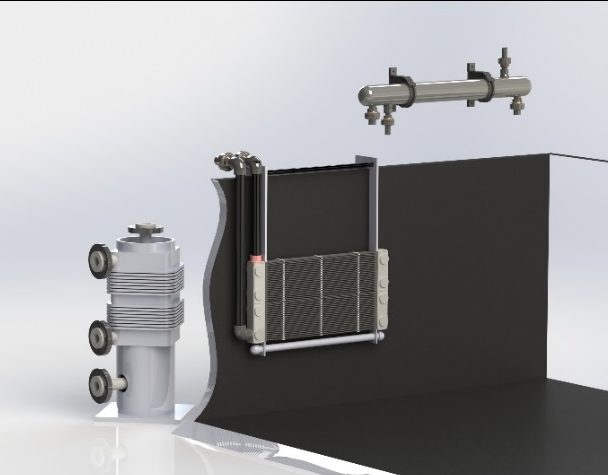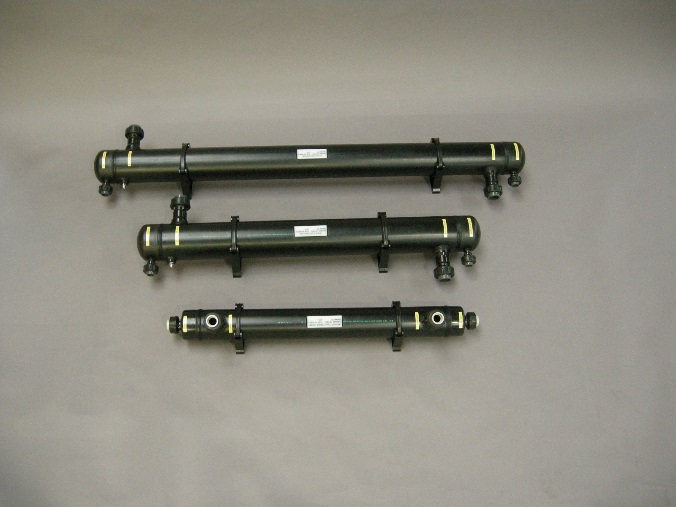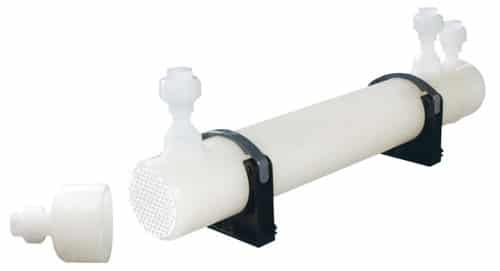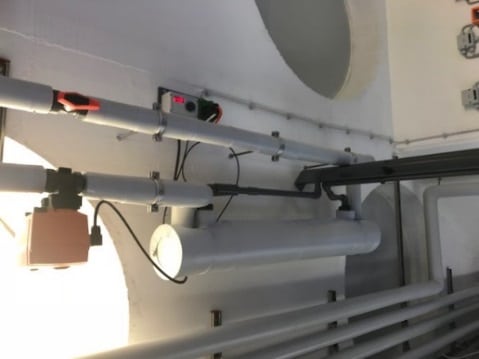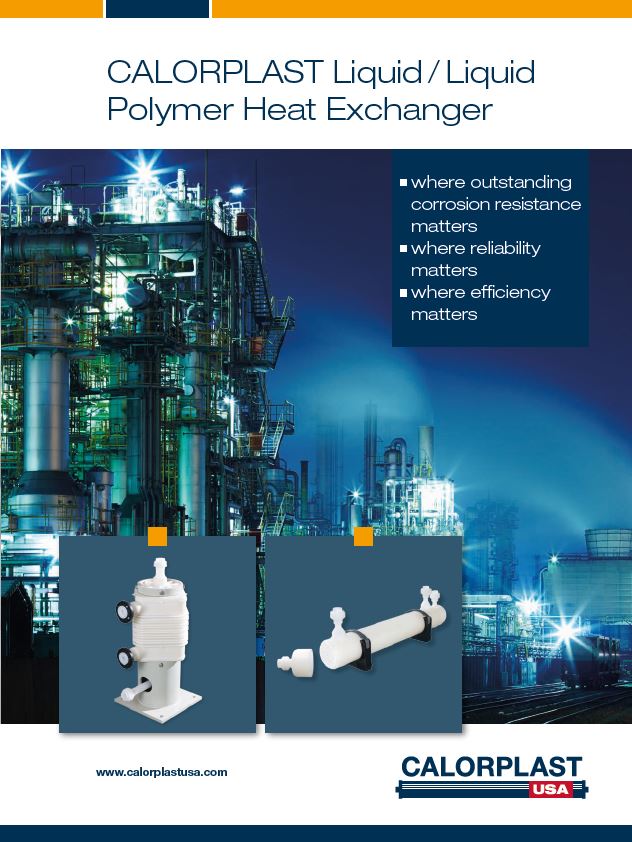Calorplast All-Plastic Shell and Tube Heat Exchangers for
Public Aquariums and Aquazoos
Most common aquarium fish hail from tropical climates. Therefore, they need water temperatures higher or lower than room temperature. The majority of aquarium fish need temperatures between 75°F and 80°F degrees Fahrenheit. This range covers the ideal temperature for both freshwater and marine fish from the tropics. Some species require lower temperatures. Even within their viable range, fish respond poorly to sudden changes in temperature, so stable temperature control of the aquarium water is imperative.


